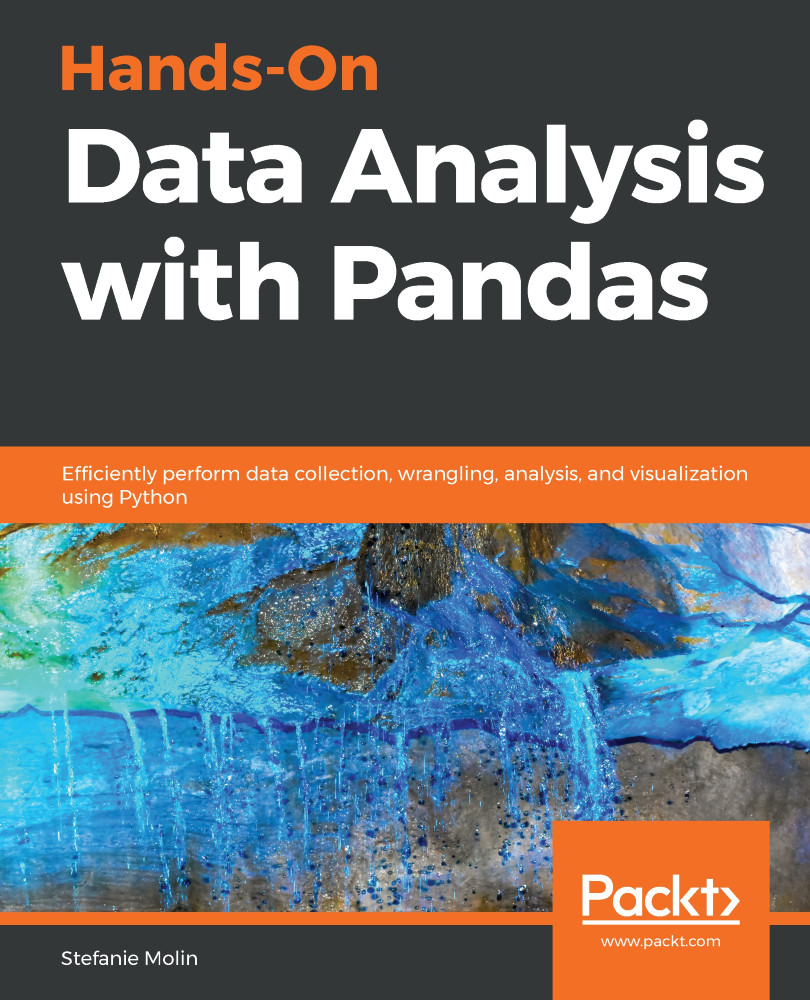The time has come for us to begin our journey into the pandas universe. We will start this chapter with an introduction to the main data structures we will encounter when working with pandas. Data structures provide a format for organizing, managing, and storing data. Knowledge of pandas data structures will prove infinitely helpful when it comes to troubleshooting or looking up how to perform a certain operation on the data. Keep in mind that these data structures are different for a reason: they were created for specific analysis tasks; we must remember that a given method may only work on a certain data structure, so we need to be able to identify the best structure for the problem we are looking to solve.
Next, we will bring our first dataset into Python. We will learn how to get data from an API, create dataframes from other data structures...


